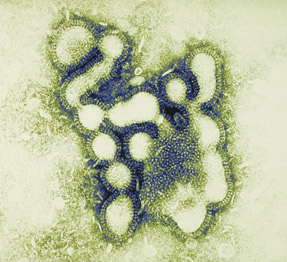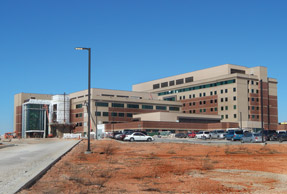A doctor seeks ways to encourage earlier palliative care talks
Palliative care doctors are working on introducing the concept of palliative care across disciplines, with a particular focus on primary care. The goal is to introduce it earlier in the process of patient care, and earlier in the educational process of the physicians themselves.

As a medical resident in the 1990s, Amy P. Abernethy, MD, PhD, FACP, watched as physicians in the ICU struggled with decisions about when to stop adding therapies for patients receiving chemotherapy.
“As we were stacking on treatments, there was often a progression away from treatment that would make the quality of your day-to-day life better,” recalled Dr. Abernethy, who is immediate past president of the American Academy of Hospice and Palliative Medicine, co-director of the Center for Learning Health Care and Duke Cancer Care Research Program at the Duke Clinical Research Institute in Durham, N.C., and chief medical officer and senior vice president of oncology for Flatiron Health, a health care data and technology company based in New York City. “People would accept more toxicity, quality of life would be further from optimal, really because of the potential promise of living longer but not necessarily the reality of living longer.”
At the same time, Dr. Abernethy said, many members of the medical community were unaware of even how to have a conversation about palliative care because the idea of palliative care as its own discipline was still fairly new. As an example, she recalled once needing to apply for a National Cancer Institute grant under the rubric of “cancer pain” because an option to study palliative care was not available.
Since then, Dr. Abernethy and others in the field have worked to help introduce the concept of palliative care across disciplines, with particular focus on primary care; establish an evidence base for core palliative care tools; and optimize palliative care for patients with cancer. Dr. Abernethy recently spoke to ACP Internist about the importance of early discussions about and involvement of palliative care.
Q: Ken Murray, MD, a retired family physician, wrote 2 now-famous essays about how doctors die differently. Why do physicians make different choices than their patients about palliative care?
A: I've been fascinated by this for a long time. Doctors find it really easy to make decisions for themselves based on having seen and witnessed bad things happen to other people and then say, “I don't want that for me.” But it becomes hard to figure out how to communicate that to a patient when you don't know exactly what that patient really wants. Meanwhile, the patient doesn't really have the benefit of having visualized all those previous experiences that the physicians have had. For the patient, the only referential memories that they have is what happened to Grandma.
We've gotten ourselves stuck in this kind of vortex where physicians don't want to be paternalistic and want patients to participate in shared decision making. And so they end up with this weirdness where physicians don't want to over-influence patients, but they've got more data. We haven't figured out how to dance this dance very well.
Q: How can the medical community convince practitioners to start palliative care discussions earlier in the delivery of health care?
A: It was really hard to have that conversation until August 2010. That was a seminal moment in palliative care, because there was a paper published in the New England Journal of Medicine ( Temel JS, Greer JA, Muzikansky A, Gallagher ER, Admane S, Jackson VA, et al. Early palliative care for patients with metastatic non-small-cell lung cancer. N Engl J Med. 2010;363:733-42. [PMID: 20818875] doi:10.1056/NEJMoa1000678) that demonstrated [that] for people with metastatic lung cancer, the introduction of palliative care at the moment of diagnosis improved survival and improved quality of life while reducing depression and addressing other concerns.
That was a pretty remarkable paper. It really changed the conversation with our physician colleagues. Now we're able to introduce palliative care earlier. Rather than making this an either-or discussion, it's a with-and-when discussion about treatment ... plus palliative care. And look, when we do it that way, patients actually live longer.
Q: What educational efforts are occurring in medical schools about palliative care?
A: It is important that we have the conversation inside medical schools and residency programs about what is palliative care, how it's a part of a care paradigm. It's not something else way over there, but rather, central to the practice of medicine. We need to teach how it gets introduced, what language to use, and also what are the core tools that general physicians, the medical students, or the internists need to have. For example, we need to talk about advance care planning; how to recognize symptom-related suffering such as shortness of breath and pain. Also, what the palliative care expert can do for you if you call that person to help with a family meeting.
We try to make sure now that medical schools have within their curriculum some information about the basics of palliative care, as well as some experiential activity that allows students to understand what really sick and chronically ill people are experiencing, what that looks like, and what is the role of palliative care within that setting.
Many medical schools these days have great example programs. Certainly Duke does, or the University of Colorado, or Northwestern University. Many of the medical schools with which I interact have some kind of in-service activity for medical students. Three weeks ago I was a visiting professor at Stanford University and I met up with the students rounding with the palliative care inpatient team, and while at Duke I led a course that was called “A Taste of Palliative Care.” It was a 2-week experiential short course that the medical students rotated through where they learned some of the basic principles, but they also went on home visits with patients currently receiving—or who are being evaluated—for palliative care.
Q: How can the palliative care community reach practicing physicians?
A: This has been really heartening to me. Palliative care has become part of Maintenance of Certification. We're seeing a lot of modules coming out for Maintenance of Certification. Many of the conference organizers, for example, the cardiologists or the pulmonologists, have been asking for special sessions on palliative care. Sometimes it's hard for us to keep up and do all the messaging. The American Academy of Hospice and Palliative Medicine will financially support a palliative medicine physician to go out to a professional meeting of another organization to present on palliative care.
There are short courses available [and] ... there are more detailed education programs that have been in place for a long time and are being revised and updated. One is EPEC (Education on Palliative and End-of-life Care), which is for the general physician. It consists of multi-module-based programs to walk physicians through the basic components of palliative care. (More information is available. )
Q: What other benefits are there in broaching palliative care earlier rather than later?
A: The interesting thing is that there's also a reduction in costs. Now, I would argue that it's better not to talk about costs when talking about palliative care. If you talk about reducing medical interventions as a part of palliative care then it can be interpreted as cost-driven reductions in care; sometimes that makes it feel as if we're taking things away in order to save money. But really, it's rightsizing the care for this particular individual, not to save money specifically, but to make sure that we don't overtreat the person, increase treatment-related toxicity, or expose a person to things that never really had a benefit in the first place. Still, every time you look at palliative care, over and over again, it saves money.




